CAN THE EFFECT OF GRAMMATICAL CLASS BE REDUCED TO DIFFERENCES IN IMAGEABILITY
Bạn đang xem bản rút gọn của tài liệu. Xem và tải ngay bản đầy đủ của tài liệu tại đây (701.13 KB, 159 trang )
IMAGEABILITY AND VERB-NOUN NAMING IN APHASIA:
CAN THE EFFECT OF GRAMMATICAL CLASS BE REDUCED
TO DIFFERENCES IN IMAGEABILITY?
MASNIDAH MASNAWI
(B.A. (HONS), NUS)
A THESIS SUBMITTED FOR THE DEGREE OF MASTER OF ARTS
DEPARTMENT OF ENGLISH LANGUAGE AND LITERATURE
NATIONAL UNVIERSITY OF SINGAPORE
2009
ACKNOWLEDGEMENTS
I wish to thank the following whose contributions were essential to this thesis.
My supervisor, Dr. Tomasina Oh, for her expertise, unwavering support and calming
influence as a mentor.
Valerie Lim, Head of the Speech Therapy Department, Singapore General Hospital,
for her commitment to this project. The staff at the Speech Therapy Department, Singapore
General Hospital, for making me feel welcomed and for the assistance rendered.
The individuals who took part in this study for volunteering their time and effort.
My family and friends for their steadfast support and encouragement.
God for all the blessings that he has bestowed upon me.
Masnidah Masnawi
20 January 2009
ii
CONTENTS
Acknowledgements
ii
Contents
iii
Summary
viii
Chapter 1: Introduction
1
1.1
Overview
1
1.2
Aims
1
1.3
Rationale And Justification
2
1.4
Overview Of Thesis
4
Chapter 2: Literature Review
2.1
2.2
Background
7
2.1.1
10
The Current Debate
Grammatical Class And Imageability Explanations For
Verb And Noun Retrieval Difficulty in Aphasia
2.2.1
2.2.2
2.3
7
11
Verb-Noun Discrepancy Reflecting Grammatical
Class Effects
13
Verb-Noun Discrepancy Reflecting Semantic Effects
17
The Claim That Grammatical Class Effects Can Be Reduced
To Differences In Imageability
20
2.3.1
Imageability
20
2.3.2
Grammatical Class Deficits Reflect Differences
In Sensory-Functional Features
22
iii
2.4
2.5
Criticisms Of The Claim That Grammatical Class Effects
Can Be Reduced To Imageability Effects
24
Interpreting Patterns Of Performance
27
2.5.1
Independent Effects Of Grammatical Class And
Imageability
2.5.2
Grammatical Class Effects Reduced To
Imageability Effects
2.6
29
2.6.1
Concreteness Effects
29
2.6.2
Imageability As A Better Predictor Of Naming
At Word Form Retrieval
31
2.7.1
A Model Of Single Word Production
34
2.7.2
Possible Implications For Current Models Of
The Current Study
Chapter 3: Experimental Tasks And Stimuli
3.1
36
48
50
Materials
50
3.1.1
Stimuli
50
3.1.2
Four Factors Considered In The Selection
Of Nouns And Verbs
3.2
30
The Claim That Semantic And Syntactic Variables Operate
Spoken Word Production
2.8
28
Imageability, Concreteness And The Current Study
Success
2.7
28
53
Experimental Tasks
62
3.2.1
Rationale Behind The Choice Of Experimental Tasks
62
3.2.2
Description Of Experimental Tasks
66
iv
Chapter 4: Report Of Study 2 (Main Study)
4.1
76
Profile Of Aphasic Participants
76
4.1.1
Screening Step 1: General Abilities
77
4.1.2
Screening Step 2: Verb-Noun Discrepancy
78
4.2
Procedures
79
4.3
Results
81
4.3.1
Task 1: Establish Verb-Noun Discrepancy
At Word Form Retrieval
4.3.2
82
Task 2: Test The Claim That Grammatical Class And
Imageability Effects Are Independent Of Each Other
At Word Form Retrieval
Chapter 5: Discussion
5.1
98
Is Word Form Retrieval Influenced By Grammatical Class
And Imageability?
5.2
99
Are The Effects Of Grammatical Class And Imageability
Independent Of Each Other?
5.2.1
5.2.2
Other Insights On The Nature Of Verb-Noun Processing
100
102
Usefulness Of Differentiating Very High And High
Imageability Words
5.3.2
100
Some Evidence For The Reducibility Of Grammatical
Class Effects To Imageability Effects
5.3.1
100
No Strong Evidence Of The Independence Of
The Two Effects
5.3
91
102
Extent Of The Usefulness Of The Sensory-Functional
Explanation Of Verb-Noun Discrepancy
103
v
5.4
What Are The Implications Of The Influence Of Imageability
Effects At Word Form Retrieval On Current Models Of
Spoken Word Production?
105
5.4.1
Implications For Levelt et al.'s (1999) Model
107
5.4.2
Implications For Foygel And Dell's (2000) Model
108
5.4.3
Implications For Caramazza 's (1997) Model
110
Chapter 6: Conclusions
6.1
Findings Of The Study
6.1.1
Suggestions For Future Research
6.2.1
115
116
Establish Range Of High And Very High Imageability
Ratings
116
6.2.2
Investigate The Reliability Of Imageability Ratings
117
6.2.3
Investigate The Usefulness Of Categorising Emotion
Words As Separate From Abstract Words
6.3
115
Connectionist Models Can Account For Imageability
Effects At Word Form Retrieval
6.2
114
Imageability Was A Strong Predictor Of Naming
Success
6.1.4
114
No Strong Evidence Of The Independence Of
Grammatical Class And Imageability Effects
6.1.3
114
Verb-Noun Naming Impairment Can Occur At
Word Form Retrieval
6.1.2
113
Conclusions
118
119
vi
Bibliography
Appendix I:
120
Language Background Questionnaire
133
Appendix II: Simplified Hand Preference Questionnaire
135
Appendix III: Visual Perception And Phonemic Discrimination Tests
136
Appendix IV: Verb-Noun Discrepancy Test
138
Appendix V: List Of Words Used In The Picture Naming And
Auditory Word-Picture Matching Tasks
139
Appendix VI: List Of Words Used In The Sentence Completion Task
And The Immediate Repetition Task And Sentences Used
In The Sentence Completion Task
Appendix VII: List Of Non-Words Used In The Immediate Repetition Task
142
150
vii
SUMMARY
The aims of this study are to test the claim that grammatical class and imageability
effects operate at the stage of word form retrieval and to test the claim that the effects of
imageability and grammatical class in aphasic word production are independent of each other.
To achieve these aims, this study investigates the effect of imageability on verb-noun naming
in two Malay aphasic patients whose locus of production impairment is located at word form
retrieval.
The first chapter provides the background of this study and explains the rationale
behind the undertaking of this study. Chapter 2 will first introduce a model of spoken word
production and verb and noun retrieval in aphasia. It will then discuss the hypothesis that
grammatical class and imageability effects can be observed at word form retrieval and its
implications on current models of spoken word production.
Two studies are reported in this dissertation. Study 1 was carried out with healthy
Malay-speaking adults to provide normative data for the experimental tasks used in Study 2
which was carried out with two Malay aphasic patients to address the claims regarding word
form retrieval and the independence of the effects of imageability and grammatical class in
aphasic word production stated above. Chapter 3 will describe the experimental tasks used in
Study 1 and Study 2 with the both the healthy and aphasic subjects respectively. It will also
report the outcome of Study 1 which is a small normative data collection study with thirtyfive healthy Malay speakers. The number, mean and standard deviation of this group of
participants are reported at the end of this chapter.
viii
Chapter 4 reports the outcome of Study 2 with the two aphasic patients in the
experimental tasks. The first part of this chapter will report the performance patterns of the
patients in tasks designed to identify the source of their naming impairment. The second part
of this chapter will report the reanalysis of the patterns of performance of the two patients in
order to investigate the extent of the role of grammatical class and imageability on their
performance patterns.
Chapter 5 interprets the patterns of performance of the patients in two parts. The first
part will focus on the patients’ performance for nouns compared to verbs in naming tasks in
order to gain more insights into the nature of verb and noun processing at word form retrieval.
The second part will focus on the implications of the occurrence of verb-noun discrepancy at
word form retrieval on three current models of spoken word production. Chapter 6
summarises the conclusions of this study and discusses the limitations and directions for
future research.
Apart from gaining theoretically informative data about the models of spoken word
production, the findings of this study may also provide useful information for the design of
clinical assessment and intervention methods for speakers with aphasia.
ix
CHAPTER 1
INTRODUCTION
1.1 Overview
The possibility that both syntactic and semantic variables operate at word form
retrieval is a novel one since word form retrieval has been thought to be concerned only with
information regarding the phonological of shape of words such as stress pattern, word length,
and syllabic structure (Jescheniak & Levelt, 1994; Levelt, 1989). The influence of variables,
which originate at the semantic level, at a later level in speech production also raises
questions about our current understanding of the architecture and processes of models of
spoken word production.
1.2 Aims
This study investigates the influence of the semantic effect of imageability and the
syntactic effect of grammatical class on verb-noun naming in two Malay aphasic patients
whose locus of impairment were located at word form retrieval.
Three questions serve as the basis of this study:
a.
Is word form retrieval influenced by both grammatical class and imageability
effects?
b.
Do these effects operate independently of each other?
c.
What are the implications of the influence of grammatical class and
imageability effects on word form retrieval on current models of spoken
word production?
1
1.3 Rationale and Justification
The undertaking of this study is motivated by several factors. Firstly, even though the
claim that syntactic and semantic effects may operate at word form retrieval is an interesting
one and may have important implications on current models of spoken word production, the
number of studies conducted to test this claim remains small. In fact, only three such studies
have been reported so far (Bachoud-Levi & Dupoux, 2003; Friederici & Shoenle, 1980;
Cohen, Verstichel, & Dehaene, 1997). Our current understanding of semantic and syntactic
effects in selective noun-verb naming impairment is that they are limited to the semantic
system (Rossell & Baty, 2008; Bi, Han, Shu, & Caramazza, 2007) and lexical selection
(Gebhart, Petersen, & Thach, 2002; Hillis & Caramazza, 1995; Silveri & Di Betta, 1997). An
investigation of the influence of these two effects at word form retrieval will increase our
understanding of spoken word production.
In their study of the role of semantic and syntactic variables at word form retrieval,
Bachoud-Lévi and Dupoux (2003) selected grammatical class and concreteness as the
respective syntactic and semantic variables for investigation and found that these effects
operate independently of each other. However, the semantic variable of imageability has been
identified as a better predictor of naming performance in aphasic speakers than concreteness
(Nickels & Howard, 1995; Marcel & Patterson, 1978; Richardson, 1975). Imageability refers to
the ease with which a word conjures a mental image (Bird, Howard, & Franklin, 2000a)
whereas concreteness refers to the extent to which a word is concrete (such as apple) or
abstract (such as hope) (Nickels & Howard, 1995). In general, concrete words and high
imageability words are retrieved more easily than abstract words and low imageability words
(the concepts of imageability and concreteness will be discussed in some depth in the next
chapter). Given the status of imageability as a better predictor of naming than concreteness,
2
imageability was selected as the semantic variable in this study. Whether the semantic effect
would exert itself more strongly than what was observed in the Bachoud-Levi and Dupoux
(2003) study will be examined.
Controlling for imageability instead of concreteness also allows for a related
investigation of the claim that grammatical class effects can be explained by differences in
imageability. Several aphasia studies have found that verb-noun discrepancy disappears in
naming tasks controlled for imageability (Bird et al., 2000a; Breedin, Saffran, & Schwartz,
1998; Marshall, Chiat, Robson, & Pring, 1996). This finding seems to suggest that verb-noun
naming deficits in aphasia reflect imageability, not grammatical class, differences between
nouns and verbs. This claim has generated much debate regarding whether or not previously
reported grammatical class deficits reflect true deficits and whether grammatical class and
imageability effects can independently influence verb-noun naming in aphasia (Bird et al.,
2000a; Breedin et al., 1998; Marshall et al., 1996). It is hoped that the findings of this study
may contribute towards this understanding.
Finally, the claim that the variables of grammatical class and imageability operate at
word form retrieval may have implications for previous aphasic studies. Taking into account
syntactic and semantic factors to correct phonological impairments in aphasic patients could
have led to the design of more effective therapy strategies which could have been translated
into improved recovery rates among aphasic patients. In addition, theoretically informative
data regarding models of spoken word production (Foygel and Dell., 2000; Levelt et al.,
1999; Caramazza, 1997) may have been under-analysed. This study will allow for the
investigation of the implications of the influence of semantic and syntactic effects at word
form retrieval on current models of spoken word production.
3
1.4 Overview of Thesis
This thesis is divided into six chapters. This chapter provides the context, aims and
rationale for undertaking this study. Chapter 2 begins with a description of the process of
spoken word production. The claim that grammatical class effects can be explained by
differences in imageability and the alternative view that these two effects operate
independently of each other will then be discussed. Finally, the implications of the influence
of these effects at word form retrieval on three current models of spoken word production
will be examined.
Chapter 3 describes the experimental tasks used in Study 1 and 2 as well as the steps
taken to verify some of the tasks designed for this thesis. It also describes Study 1, a
normative data collection exercise conducted with 35 healthy Malay speakers for a picture
naming task, an auditory word-picture matching task, a sentence completion task and an
immediate repetition task. This was necessary as there were no available norms for these
tasks for Malay-speaking individuals at the time of testing. Since the time of testing,
however, PALPA-based aphasic language assessment tools have been developed for
Singapore bilingual adult speakers (Sajlia & Rickard Liow, 2008). The data collected from
Study 1 were used to determine whether the performance of the aphasic patients in Study 2
were impaired.
Chapter 4 reports Study 2, which is the main study of this thesis. Two Malay aphasic
participants were recruited and tested on the four tasks normed in Study 1. Following the
descriptions of these patients and the experimental procedure observed in this study is a
report of the patients' performance in relation to these questions under investigation:
4
a.
Can the effects of imageability and grammatical class can be observed at
word form retrieval?
Here, the performance of the patients in a series of tasks designed to locate
the source of their naming impairment at word form retrieval is reported.
b.
Do grammatical class and imageability effects operate independently of
each other at word form retrieval?
A reanalysis of the patients' patterns of performance will be reported to
investigate the nature of grammatical class and imageability effects at
word form retrieval.
Table 1 below provides a summary of the chapter, participant type and tasks used in
Study 1 and 2.
TYPE OF
STUDY
CHAPTER(S) DETAIL
TASKS
STUDY
CHAPTER 3:
Study 1
Normative
1. Picture Naming
- Participant
(35 healthy adult
Data
- Syllable Count
- Procedure
volunteers)
Collection
- Semantic Knowledge
- Performance description & analysis
2. Auditory word-
Study 2
CHAPTER 4:
picture matching
- Participant
3. Sentence Completion
- Procedure
- Syllable Count
- Performance description
4. Immediate Repetition
CHAPTER 5:
Task
Main Study
(2 aphasic patients)
- Performance analysis
Table 1. Summary of the chapter detail, participants and tasks (tasks in bold & in italics indicate main & followup tasks respectively) of Study 1 & 2.
5
Chapter 5 provides an analysis of the performance patterns of the two aphasic
participants, with an emphasis on the nature of the differences between their performance for
nouns compared to verbs. These insights gained into verb and noun processing at word form
retrieval will then be discussed in relation to three current models of spoken word production
(Foygel et al., 2000; Levelt et al., 1999 & Caramazza, 1997).
Chapter 6 consolidates the findings of this thesis, discusses the limitations of this
study and recommends directions for future research.
6
CHAPTER 2
LITERATURE REVIEW
The possibility that syntactic and semantic variables operate at word form retrieval
adds a new dimension to our current understanding of the processes involved in producing
spoken words. To briefly illustrate this, this chapter begins with a description of a model of
spoken word production. The on-going debate as to whether grammatical class and
imageability effects operate independently of each other or whether grammatical class effects
can be reduced to differences in imageability will be discussed. The architecture of three
models of spoken word production (Foygel et al., 2000; Levelt et al., 1999 & Caramazza,
1997) will then be described. This serves as a priori to the discussion of the implications of
semantic and syntactic effects at word form retrieval on the three models in a later part of this
thesis.
2.1 Background
The various levels of spoken word production are believed to be organised in a
functional manner (Foygel & Dell, 2000; Levelt, Roelofs, & Meyer, 1999; Caramazza, 1997;
Garrett, 1992; Kay, Coltheart, & Lesser, 1992). For instance, according to the
Psycholinguistic Assessments of Language Processing in Aphasia (PALPA) model of spoken
word production (Kay et al., 1992) (see Figure 1), the semantic system is a store of the
semantic representation of all words known to a speaker. This representation is typically a
bundle of semantic features or structural descriptions. The representation of the word cat, for
example, specifies semantic features such as four-leggedness and whiskers.
7
The phonological output lexicon contains information pertaining to the phonological
shape of words such as word length, word frequency, syllabic structure and stress pattern
(Jescheniak and Levelt, 1994; Levelt et al., 1999). It also contains the phonological
representations of all the spoken words in a speaker's vocabulary. This is the location where
the processes used to retrieve entries of these representations take place (Kay et al., 1992).
Different models of spoken word production (Foygel et al., 2000; Levelt et al., 1999;
Caramazza, 1997) diverge on the mechanisms used and the terminology to which they refer.
However, most models agree that lexical selection and word form retrieval are required to
access a word’s phonological information.
Speech
Pictures & Seen Objects
Auditory
Phonological
Analysis
Phonological
Input
Lexicon
Acoustic-ToPhonological
Conversion
Visual Object
Recognition
System
Semantic
System
Phonological
Output
Lexicon
Speech
Figure 1. Schematic model of spoken word production adapted from PALPA (Kay et al., 1992)
8
Lexical selection is the process which compares the activated semantic representation
of the target word to the set of representations of all spoken words known to the speaker and
selects the best match (Bachoud-Levi & Dupoux, 2003). For instance, the semantic
representation of the word cat will match several entries such as tiger, lion and dog to various
degrees depending on their semantic overlap with the concept cat.
Word form retrieval is the process which recovers phonological information related to
the selected lexical entry. This consists of a string of sounds which forms the word, together
with its associated supra-segmental and metrical information. The motor speech processes
then uses the word form to create and execute a detailed phonological plan which results in
actual articulation (Bachoud-Levi & Dupoux, 2003).
Departing from this view of the organisation of the levels of spoken word production,
Bachoud-Lévi and Dupoux (2003) suggest that the various levels need not be entirely
organised according to the role they play in spoken word production. They found that
semantic and syntactic variables operate at word form retrieval, a level traditionally thought
to be concerned only with the phonological aspects of spoken word production. They
reported the case of DPI, a patient with a naming impairment located at word form retrieval.
He demonstrated a reverse imageability effect in his naming ability as he was better at
naming verbs and abstract nouns than concrete nouns. He was generally better at producing
verbs compared to nouns and within the noun category, he produced abstract nouns more
accurately than concrete nouns. These results led them to suggest that grammatical class and
concreteness operated independently at word form retrieval. No analysis was available for the
concreteness effect for verbs as concreteness was not controlled for the verb stimuli used in
their study.
9
Their claim is a provocative one. It suggests that the mind does not necessarily
organise its linguistic levels along parameters which seem the most convenient from the
linguistic or functional perspectives. It also suggests that each linguistic level may be
organised according to conceptually defined categories, such as concreteness, which are
discriminated along distinct pathways from the semantic level right down to the phonological
output level (Bachoud-Lévi & Dupoux, 2003).
2.1.1
The Current Debate
The finding that both semantic and syntactic effects operate at word form retrieval
raises questions regarding the organisation and processes of current models of spoken word
production. To address these questions more comprehensively, the on-going debate as to
whether grammatical class deficits truly exist has to be taken into account. Evidence that
grammatical class effects often disappear in tasks controlled for imageability could mean that
models need only to accommodate semantic, but not syntactic, variables at word form
retrieval.
Would the disappearance of grammatical class effects also be observed at word form
retrieval or can grammatical class and imageability effects operate independently of each
other? In addition, would the explanation which accounts for the reducibility of grammatical
class effects to differences in imageability in the semantic system also hold true at word form
retrieval? The answers to these questions may affect the way in which the architectures of
current models of spoken word production need to be modified.
10
2.2 Grammatical Class And Imageability Explanations For
Verb And Noun Retrieval Difficulty in Aphasia
One of the most common difficulties faced by aphasic speakers is the difficulty to
retrieve the word they wish to express. Word retrieval may be impaired for a variety of word
types such as emotional words (Kensinger & Schacter, 2006), names of colours (Beauvois &
Saillant, 1985), negative words (Estes & Adelman, 2006) and grammatical words (Silveri &
Ciccarelli, 2007; Luzzatti, Raggi, Zonca, Pistarini, Contardi, & Pinna 2002). Of interest to
this thesis is verb-noun retrieval impairment. Nouns and verbs are complex words as they
comprise conceptual, morphological, phonological, semantic, and syntactic features. These
features need to be available when verbs and nouns are used; verbs-nouns impairments may
result from the impairment of one or a combination of these features.
Verb and noun impairments appear to manifest themselves in different ways which
suggest that there are inherent differences between nouns and verbs. For instance, features
critical for verb production may differ from those required for noun production. Mätzig,
Druks, Masterson, & Vigliocco (2009) found that action pictures elicited different types of
errors compared to object pictures. The latter elicited mainly semantic errors while the former
elicited mainly circumlocutions, which were definitions of the target, occurring most
probably as a result of lexical retrieval problems. In addition, action pictures also elicited
‘misinterpretation of the picture’ errors. This finding seemingly suggests that they pose
different demands on the language system.
11
In addition, verbs require greater processing demands compared to nouns. Mätzig et
al. (2009) carried out an object and action naming study with nine aphasic participants.
Comparison data were obtained from non-brain damaged participants. As healthy participants
often obtain naming accuracy at ceiling, the dependent variables of the study were not only
accuracy but also latencies. Predictably, they found that the naming latencies of the aphasic
participants were longer than those of the comparison group. More interestingly, however,
was their finding that even with the difference in naming latencies, both groups were faster to
name objects than actions.
Prior to the Mätzig et al. (2009) study, naming latencies have not been collected in
action and object naming studies of aphasic participants. However, in studies which
compared latencies in object and action naming in non-brain damaged individuals,
consistently shorter latencies were found for object pictures compared to action ones (with
normal English speakers, see Szekely, D'Amico, Devescovi, Federmeier, Herron, & Iyer,
2005; with English and Greek-speaking adults, see Bogka, Masterson, Druks, Fragioudaki, &
Chatziprokopiou, 2003; with older adults, see Druks, Masterson, Kopelman, Claire, Rose, &
Ray, 2006) and in Alzheimer’s disease (Druks et al., 2006). These consistent findings of
shorter naming latencies for object naming than for action naming in different studies suggest
that action naming is more demanding than object naming. This additional demand for verb
naming in non-brain damaged individuals may have contributed to the verb impairment
frequently found in aphasia. This suggests that verb impairment may be due to the more
difficult activity of verb naming (Mätzig et al., 2009).
12
Two bodies of literature based on grammatical class and imageability have emerged
to account for the greater difficulty in retrieving verbs compared to nouns. The question of
whether these accounts hold true for verb-noun impairment at word form retrieval requires
further investigation. The next section will examine these two approaches.
2.2.1
Verb-Noun Discrepancy Reflecting Grammatical Class
Effects
There are several arguments in the literature which support the view that differences
in grammatical class can account for verb-noun discrepancy.
2.2.1.1
Verbs And Their Arguments
Nouns do not have an argument structure and typically behave in predictable and
grammatically-similar ways. For instance, the majority of concrete nouns are count nouns,
whose plural form can be achieved by adding the suffix –s. This property of nouns facilitates
their early acquisition by language learners (Tomasello, Akhtar, Dodson, & Rekau, 1997;
Gleitman, 1993), which may explain class effects. However, there is evidence to suggest that
input variables such as exposure to activity-oriented discourse may cause a verb spurt before
a noun spurt in early language acquisition (Choi & Gopnik, 1995). The relationship between
verbs and their argument structures is more complex. Different verbs have different argument
structures. Some verbs even have more than one permissible argument structure and the verb
itself determines the type and number of argument structures available to them. It is difficult
to generalise the usage of one verb to another as it will unlikely result in the correct selection
of a verb's argument structure. This property of verbs accounts for the later and more difficult
acquisition of verbs (Shapiro, Zurif, & Grimshaw, 1989).
13
Aphasic speakers have shown to have more difficulty producing verbs with more than
one argument structures. This difficulty applies even to tasks where argument structures need
not be produced such as picture naming tasks (Thomson, 2003; Kim & Thomson, 2000).
Another evidence stems from Luzzatti, Aggujaro and Crepaldi's (2006) anatomocorrelative study on 20 patients belonging to different aphasic categories. They found that the
naming of transitive verbs is more impaired in patients with agrammatism, a type of aphasia
characterised by the substitution or omission of function words (articles, auxiliary verbs and
prepositions) and bound morphemes (prefixes and inflectional and derivational suffixes)
(Galante & Tralli, 2006). This finding seems to suggest that patients with agrammatism
appear to be more sensitive to argument structures (Luzzatti et al., 2006), thus implying that
the greater difficulty to produce verbs is due to argument structure, which is a grammatical
factor.
2.2.1.2
Grammatical Class Differences At The Morphology Level
Shapiro and Caramazza (2003a & 2003b) and Shapiro, Shelton, and Caramazza (2000)
reported several patients who displayed verb and noun deficits simultaneously, with verbal or
nominal inflection deficits. They found that patients who presented noun or verb retrieval
deficits also presented with the inflectional morphological deficits specific to the impaired
category. The reverse was also true; aphasic speakers who presented inflectional
morphological deficits for nouns and/or verbs presented with the corresponding noun or verb
retrieval deficits.
14
2.2.1.3
Nouns And Verbs As Lexical Forms
Verbs and nouns are also regarded as distinct categories of grammatical class known
as lexical forms. According to this distinction, the crucial difference between nouns and verbs
should apply not only to concrete verbs and nouns, but also to abstract verbs and nouns. In
their study, Berndt, Haendiges, Burton, and Mitchum (2002a) found that patients who
demonstrated relative verb deficits in a picture naming task which used only concrete word
stimuli also demonstrated impaired verb production in a sentence completion task which used
only abstract word stimuli, that is, the relative impaired verb performance observed for the
concrete stimuli set paralleled that of the abstract stimuli set.
2.2.1.4
Empirical Evidence
Shapiro et al. (2000) described JR, an anomic aphasia patient with preserved action
naming but impaired object naming. In a task which elicited inflectional morphology attached
to nouns and verbs, JR's performance was impaired for inflections of nouns but was
preserved for inflections of verbs. According to Shapiro et al. (2000), the relationship
between noun naming and noun inflections cannot be explained in terms of semantic
variables. Therefore, his noun impairment can only be categorised as a selective grammatical
class deficit.
Berndt, Haendiges and Wozniak (1997) described a patient with selective verb
impairment who was better at producing abstract and concrete nouns than verbs in a reading
aloud task. This contradicts the prediction of the semantic account of verb impairment that
concrete nouns would be produced more accurately than verbs and abstract nouns (Bird,
15
Lambon, Hodges, & Patterson, 2000b). While this evidence seems to support a grammatical
class account of verb-noun discrepancy, the task used in Berndt et al.'s (1997) study was a
reading aloud task, which was cognitively more demanding than a naming task. Therefore,
the results of their study may reflect the greater demands of the reading aloud task in addition
to grammatical class effects.
Brain imaging studies show that different brain regions are required for noun and verb
processing. Findings from a visual hemifield study suggest that while nouns may be
processed by both hemispheres of the brain, verbs may be processed exclusively by the left
hemisphere (Sereno, 1999). Positron Emission Tomography (PET) and event-related brain
potentials (ERPs) from neuroimaging studies with normal subjects show distinct brain
activation patterns for verbs and nouns (Perani, Cappa, Schnur, Tettamanti, Collina, Rose, &
Fazio, 1999; Pulvermuller, Lutzenberger, & Preissl, 1999 respectively). In their study,
Damasio, Tranel, Grabowski, Adolphs, & Damasio (2004) found that temporal lobe damage
was always associated with noun deficits. In contrast, heterogeneous lesion sites, namely the
frontal and parietal areas, the basal ganglia and in some cases, even the temporal lobe, were
associated with verb deficits. The variety of lesion sites which gives rise to verb impairments,
compared to the localized lesion site which produces noun deficits, suggests that the
functional basis for verb deficits is a variable one. This finding seems to suggest that nouns
and verbs are processed differently, thereby possibly creating different grammatical features
of nouns and verbs.
Hillis and Caramazza (1995) described EBA who demonstrated a verb deficit in
written lexical decision and word comprehension tasks but showed a noun deficit in spoken
output tasks. It is clear that his semantic system was preserved since the same stimuli were
16
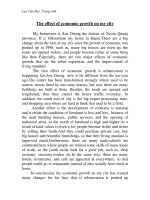


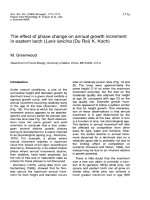
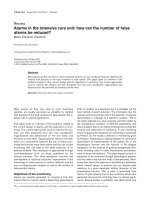
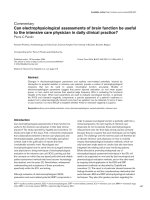
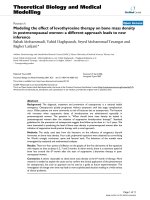
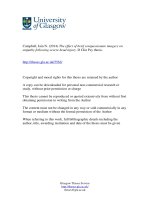
![gold et al - 2012 -the effect of engagement and review partner tenure and rotation on audit quality - evidence from germany [mapr]](https://media.store123doc.com/images/document/2015_01/06/medium_YF2viUqvRF.jpg)
![kwon et al - 2014 - the effect of mandatory audit firm rotation on audit quality and audit fees empirical - evidence from the korean audit market [mafr]](https://media.store123doc.com/images/document/2015_01/06/medium_har1420548188.jpg)